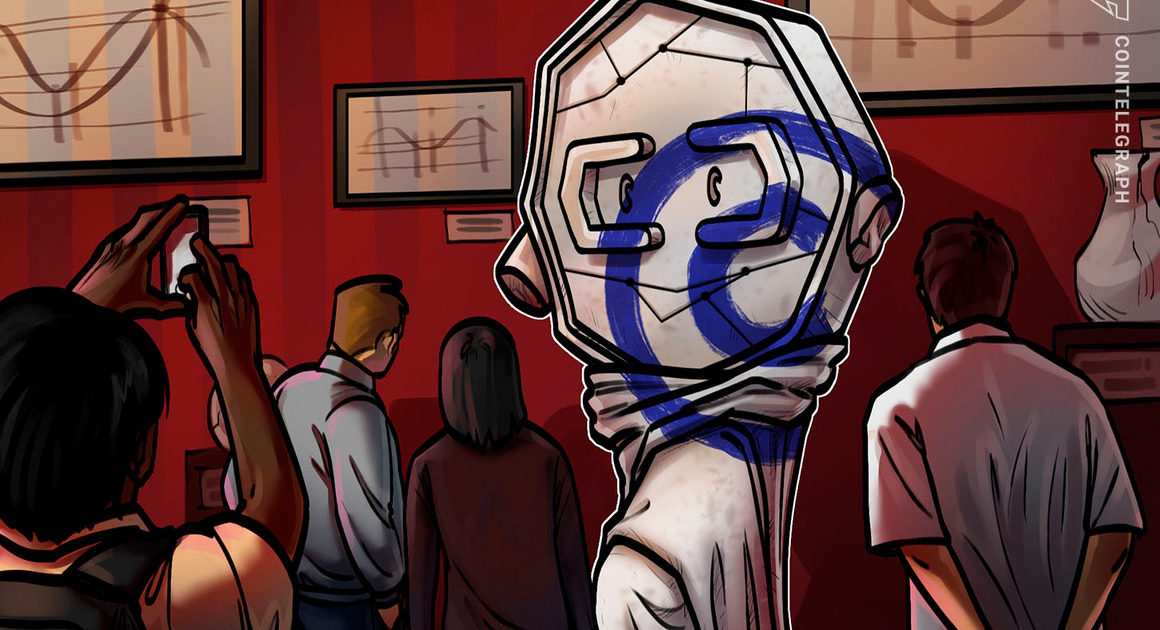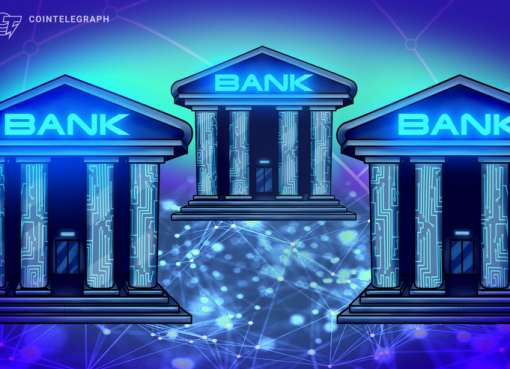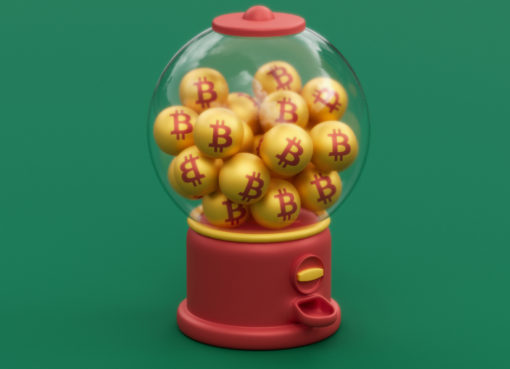A nonfungible token (NFT) can be both a representation of a physical or digital asset that only exists on the internet — a programmable piece of art. It provides ownership of an underlying asset, like a painting, and it can also represent a digital asset in the form of a software code. Therefore, I like to conceptualize NFTs in a more technical view:
“An NFT is a pattern of smart contracts that provides a standardized way of verifying who owns an NFT, and a standardized way of ‘moving’ nonfungible digital assets.”
Before discussing the legality of an NFT, it is necessary to check what nonfungible tokens mean digitally. In its most general sense, an NFT is the digital representation of a nonfungible asset in the form of a serial number. Take a look at the image below.
In this article, I will try to point out numerous legal and judicial issues related to how a serial number can represent an asset on digital media and what is included in that code. It is important to keep in mind that, in addition to showing the property of a nonfungible asset, an NFT also indicates where the content of that asset has been located since its inception.
Related: How the NFT market leveraged blockchain tech for explosive growth
Owning an NFT
Is owning an NFT different from owning the rights of the underlying asset that compounds it?
In our current society, we are used to a piece of paper indicating or representing property rights and some work. We all have had contact with such kinds of papers in our daily lives: a deed to a property, a certificate of vehicular ownership, or a lease to a house. We already understand the value of these legal pieces of paper. That could be a good way of looking at NFTs as well, although there are some differences regarding the rights linked to them.
Related: Hybrid smart contracts will replace the legal system
There is a generalized perception that an NFT is an original asset itself. But is that perception correct? Wouldn’t an NFT be a receipt of owning a determined asset? As with everything else in the world of law, the correct answer is: it depends. It depends on what kind of underlying asset the NFT represents. An NFT can either be the original asset or an asset that only exists in the digital virtual world, like CryptoKitties or CryptoPunks. At the same time, an NFT can be the receipt confirming that you own a determined asset in the real world, such as real estate, or a physical piece of art exhibited at the Louvre Museum in Paris.
With that in mind, let’s go forward and discuss the problems that exist for internet-era creators that could be solved by registered NFTs via blockchain technology.
How does blockchain help the creators of content represented by NFTs?
Since the advent of the internet and peer-to-peer (P2P) networks, the content creators and the industry of intellectual property have been looking for a way of turning an asset, copyright protecting it and proving its scarcity and property in a digital realm. It was necessary to have a registering system that could provide immutability and precedence, while proving scarcity on the internet. But that became only possible after the double-spending problem which was solved by the invention of blockchain technology.
Related: How NFTs, DeFi and Web 3.0 are intertwined
An NFT registered via blockchain turns the content marketed on the internet immutable and unique, allowing artists to protect their creations from falsification and duplicity in the digital realm. Thus, blockchain-registered NFTs solve the problems of digital piracy and high costs of financial intermediation, among others, making a new type of economy feasible. One that is governed not by the traditional trust validators, but by those who produce and create value.
What rights are necessary for a person to create or coin an NFT?
That is a very up-to-date question. This spring, DC Comics sent a notice for artists involved in the creation of their superheroes comics prohibiting the commercialization of the art with their characters, including the digital production of NFTs. Probably, the news about the former DC comic artist, José Delbo, making $1.85 million for auctioning NFTs depicting the popular fictional heroine Wonder Woman got the company’s attention, leading to such a reaction.

The reason for the question raised in this section is simple: Not all artists and creators own the copyrights to their work. Usually, artists don’t need to worry about the rights of property or copyrights of their works, as they are the creators. Initially, they already hold everything we know in the world of intellectual property and the whole idea of rights. However, the general practice of the creator economy is that the rights to a work of art, music, etc., are allocated to several different parts: One part may hold the rights of distribution, another part has the exhibition rights, one other controls the performance rights, and another one owns the marketing rights.
What if you create an NFT of the work — with copyrights allocated to everyone involved — the reasonable question will be: Which of these rights holders would have the appropriate legal status to do so? Can each of the parties involved do this unilaterally, without the other right holders? That will take a lot of time to solve, both judicially and legally. Meanwhile, as the hype of NFTs is very recent and is still in development in many different sectors — such as music, games, physical art industries and the recently created programmable art — those legal issues are yet to be solved.
Related: Beyond the hype: NFTs’ actual value is still to be determined
Who has the right to coin NFTs? What exactly does that mean? While blockchain technology and decentralized marketplaces evolve in parallel, those questions will probably be the object of judicial demands and will be decided case by case. For now, it seems impossible to create universal legislation that encompasses situations in constant change.
There is still too much confusion in the NFT space, not only about which rights the creators are assigning, but also what the buyers are purchasing with the NFTs. The judicial analysis gets even more complex, especially when we talk about the property of NFTs, which includes several authors and their copyrights.
Another point to consider is how platforms have issued the terms of content and how content-intermediate companies deal with NFTs. The majority of those intermediate companies between the content creator and the NFT buyers need to do their judicial work by applying reasonable diligence when they build those platforms.
This gets more complicated when there is co-authorship in a determined creation, especially when the owners of the copyrights for those creations are companies. Will the NFTs be translated to protect intellectual property portfolios owned by those companies, and if yes, then how exactly?
What rights does the purchase of an NFT give to the buyer?
When an NFT is purchased, there are three parties that must be considered: the author of the original work, the creator of the NFT and the buyer of the purchased NFT. First, I need to underline that owning an NFT doesn’t mean obtaining the property of the underlying asset, but rather only getting the property of the NFT.
Nevertheless, as NFTs exist in digital media with no borders and in several jurisdictions simultaneously, or even where legislation is practically nonexistent, it is imperative for the platforms listing NFTs to specify the terms. And, with the terms, I mean that I hope they are included in their smart contracts to define which rights the NFT buyers are receiving from the creators.
Here, it is interesting to know that you are not obtaining ownership of the asset itself, nor even getting the intellectual property rights of that work. And, in this sense, the reasoning is no different from the acquisition of a physical piece of art in the traditional market. If a traditional painting in an auction is bought, the buyer does not receive the intellectual property rights of the asset itself. The buyer has the right to hang the new painting on their wall, but not the intellectual property of that painting, unless it has been commissioned. Therefore, it is not allowed to make posters of that painting on the wall. No one can’t create nor change it.
That’s why the terms of use and whom you are buying from are so important, and the silence about the transmission of intellectual property rights means that they are not able to be held. It is important to note that most platforms and markets are not very explicit about this. So, to eliminate any doubt of ambiguity, buyers protect themselves by clarifying that information.
To sum it up, by purchasing an NFT, one is only receiving the rights to the bought NFT, the ownership rights to brag about having some connection to that work. But one does not have the intellectual property rights to use that work — no one has the right to copy, distribute or execute it, unless of course, such rights have been designated. Thus, the legal analysis of an NFT is very similar to what it would be with traditional intellectual property rights as if there were no NFTs at all.
How to determine the jurisdiction of an NFT?
Hypothetically speaking, imagine that copyright in France is perpetual (meaning that it lasts forever), it expires with the author’s death in the United States and that Canada protects copyright for 50 years after the author’s death. When the NFTs are registered in decentralized blockchain networks, what will the jurisdictional approach be? Which laws will be applied? For a completely decentralized platform that is distributed all over the internet, which rights should be applicable?
Will the jurisdiction be based on where the original artist lives, or could the jurisdiction be applied between the platform and the creator of the NFT? In any event, we will probably see many jurisdictional issues coming up, especially when dealing with something at early development and in progress.
Closing remarks
We are still in the Wild West of regulating the emerging technologies, and the current difficulty with identifying how the NFT market will go through the paths of legal protection explains what is currently going on.
How can one identify the parts’ intention when dealing with those new rights if they are different? Will NFTs be considered a new base on what already existed and was contracted? Or will they be considered something that the previous agreements did not contemplate, which has the potential to generate more income?
Can someone take ownership of something that already exists to create something that will be designated as an NFT? Can someone take ownership of the NFT without the consent of the owner of the copyrighted work?
This article aimed not to deplete the subject, but only to bring some considerations and ideas regarding the legal aspects of nonfungible tokens. NFTs under the juridical and legal perspectives are still evolving, and the ways to solve the legal issues and judicial disputes that will arise have yet to be considered.
The views, thoughts and opinions expressed here are the author’s alone and do not necessarily reflect or represent the views and opinions of Cryptox.
Tatiana Revoredo is a founding member of the Oxford Blockchain Foundation and is a strategist in blockchain at Saïd Business School at the University of Oxford. Additionally, she is an expert in blockchain business applications at the Massachusetts Institute of Technology and is the chief strategy officer of The Global Strategy. Tatiana has been invited by the European Parliament to the Intercontinental Blockchain Conference and was invited by the Brazilian parliament to the public hearing on Bill 2303/2015. She is the author of two books: Blockchain: Tudo O Que Você Precisa Saber and Cryptocurrencies in the International Scenario: What Is the Position of Central Banks, Governments and Authorities About Cryptocurrencies?




